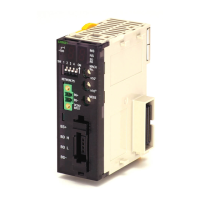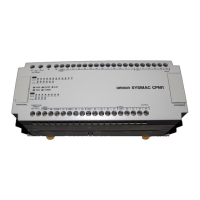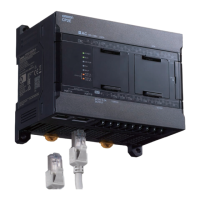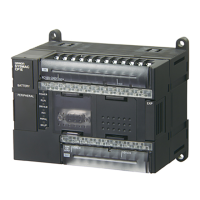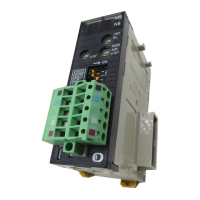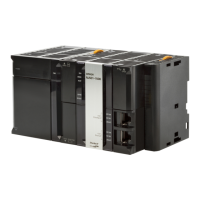1. Basic Understanding of Instructions
1-1 Basic Understanding of
Instructions
1
3
CS/CJ/NSJ Series Instructions Reference Manual (W474)
The following instructions are used in pairs to set and cancel certain instruc-
tion conditions. These paired instructions must be in the same task.
Flags
In this context, a flag is a bit that serves as an interface between instructions.
Operands
Operands specify preset instruction parameters (boxes in ladder diagrams)
that are used to specify I/O memory area contents or constants. An instruction
can be executed entering an address or constant as the operands. Operands
are classified as source, destination, or number operands.
Instruction
condition
Description Setting
instruction
Canceling
instruction
Interlocked An interlock turns OFF part of the
program.
Special conditions, such as turning
OFF output bits, resetting timers,
and holding counters are in effect.
IL(002) ILC(003)
BREAK(514)
execution
Ends a FOR(512) - NEXT(513) loop
during execution.
(Prevents execution of all instruc-
tions until to the NEXT(513) instruc-
tion.)
BREAK(514) NEXT(513)
Executes a JMP0(515) to
JME0(516) jump.
JMP0(515) JME0(516)
Block program
execution
Executes a program block from
BPRG(096) to BEND(801).
BPRG(096) BEND(801)
Input flags Output flags
Flag Description Flag Description
Carry (CY)
Flag
The Carry Flag is used as
an unspecified operand in
data shift instructions and
addition/subtraction
instructions.
Condition
Flags
Condition Flags include the
Always ON/OFF Flags, as
well as flags that are
updated by results of
instruction execution.
In user programs, these
flags can be specified by
labels, such as P_On,
P_Off, P_ER, P_CY, P_EQ
rather than by addresses.
Flags for
Special
Instructions
These include teaching
flags for FPD(269) instruc-
tions and network commu-
nications enabled flags.
Flags for
Special
Instructions
These include memory card
instruction flags and
MSG(046) execution com-
pleted flags.
